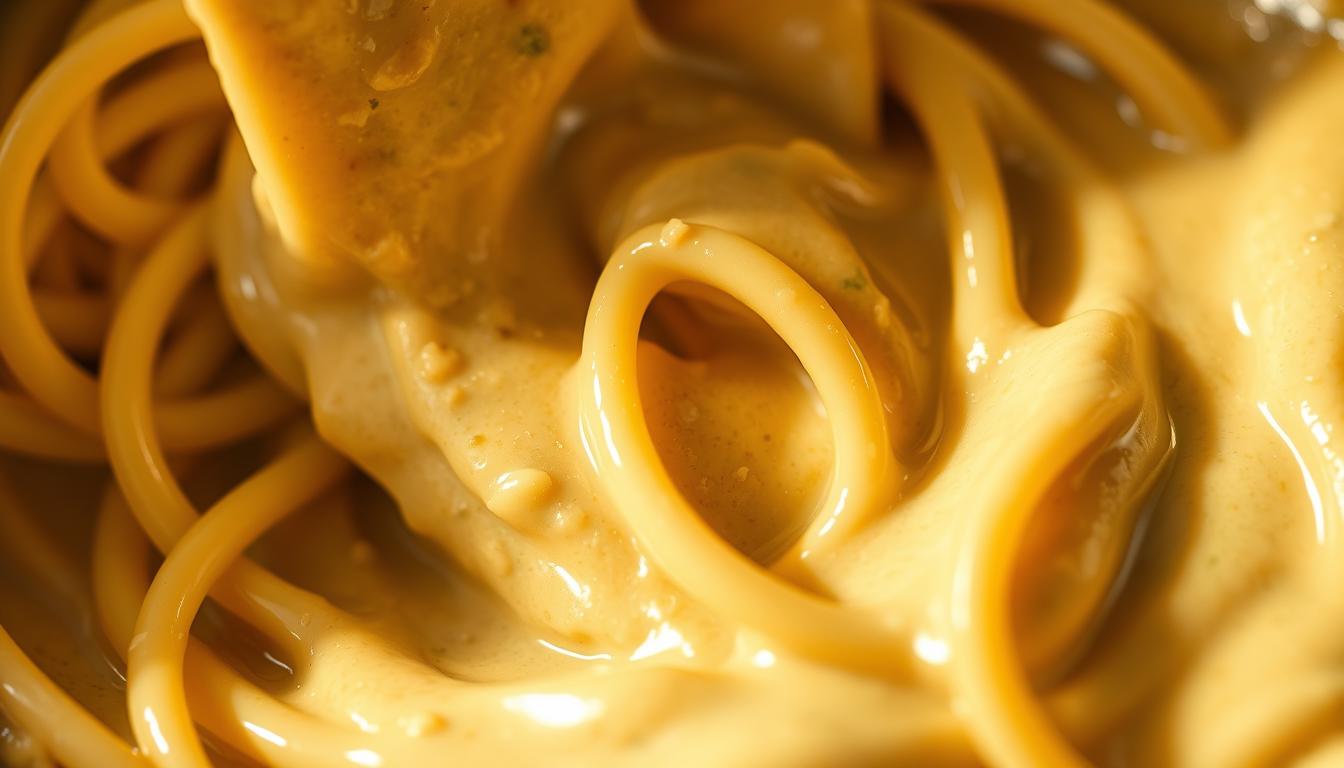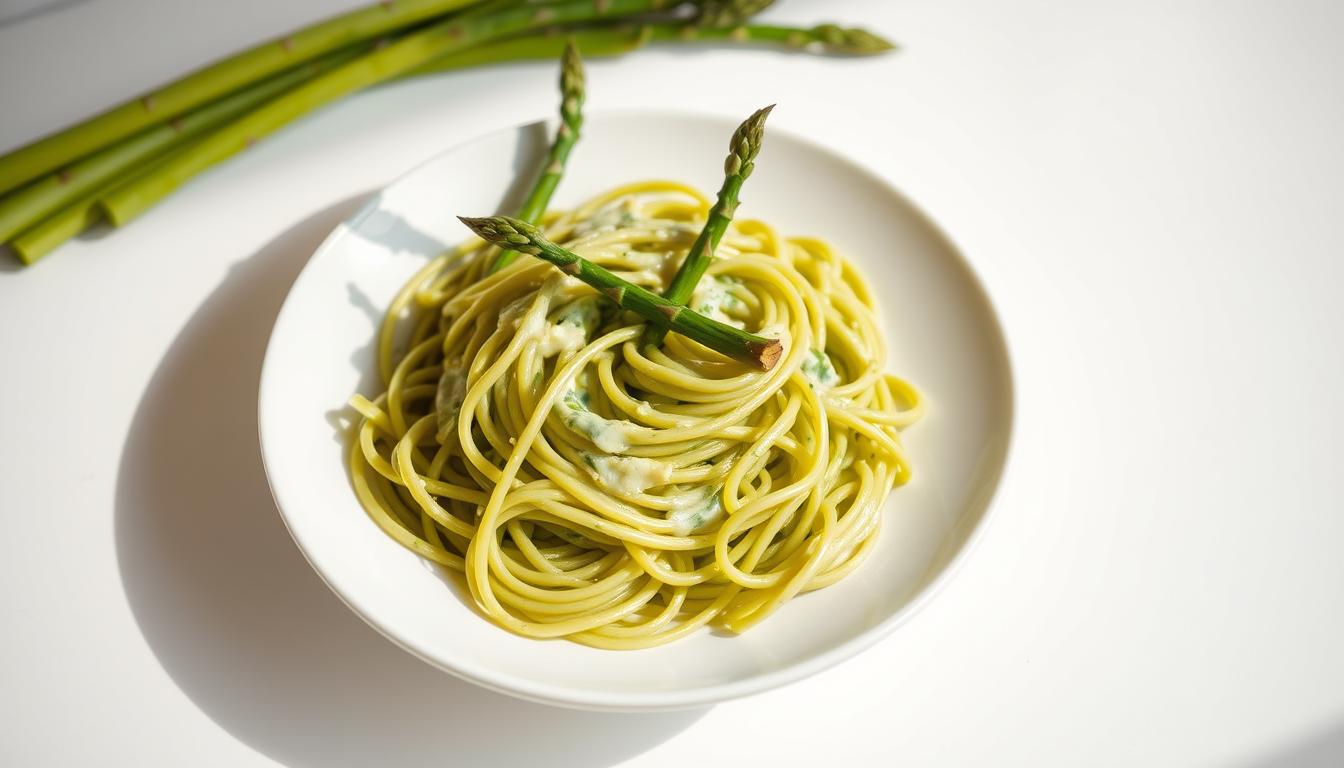Easy Instant Pot Pasta Recipes You’ll Love
Table of Contents
Ever stare into your fridge after a long day, wondering how to create something truly satisfying without spending hours cooking? We’ve all been there. That’s why this creamy spring vegetable dish feels like a warm hug for your busy evenings.
Imagine tender noodles coated in a bright, lemony sauce that comes together faster than takeout. The secret? Your Instant Pot locks in flavors while cutting prep time to just 25 minutes. You’ll need only eight simple ingredients – most already in your pantry – letting fresh produce take center stage.
What makes this method special? Pressure cooking blends the richness of cream with the earthy sweetness of seasonal greens perfectly. Whether you’re feeding hungry kids or hosting friends, it adapts effortlessly. One pot means less cleanup, and the results taste like you’ve labored all afternoon.
We’ll show you how to master this technique for weeknights and special occasions alike. Discover why home cooks nationwide swear by this approach – it’s about savoring good food without sacrificing your evening. Ready to transform how you think about quick meals?
Introduction: Embracing Spring Flavors in Your Kitchen
When sunshine spills through your windows and markets burst with seasonal produce, your meals should sing with renewal. This dish wraps spring’s essence into one vibrant bowl, pairing tender greens with a sauce that dances between rich and zesty.
Why This Dish Stands Out
Green spears shine here – their earthy sweetness perfectly contrasts the velvety sauce. Unlike winter comfort foods, every bite feels light yet satisfying. The magic lies in timing: pressure cooking locks in brightness while softening stems just enough.
Crafting Harmony on Your Plate
Crème fraîche forms the sauce’s luxurious base, but lemon zest cuts through with sunny sharpness. Pro tip: Save that starchy cooking liquid! It transforms the mix into silky perfection that clings to noodles.
Slice stalks into thirds for ideal texture – crisp ends balance softer middles. This isn’t just dinner; it’s a celebration of seasons changing. Serve it alongside grilled proteins or let it star solo at meatless gatherings.
Easy Instant Pot: asparagus pasta recipe
Why juggle multiple burners when your pressure cooker becomes a flavor powerhouse? This method turns weeknight cooking into a streamlined art form, delivering restaurant-quality results with minimal effort.
What Makes the Instant Pot Version Special
The magic happens under pressure. Your appliance cooks noodles and greens together, infusing each bite with layered flavors. Traditional methods often leave vegetables mushy, but here, spears stay crisp-tender while absorbing savory notes from the broth.
Starchy liquid becomes your secret weapon. Using less water creates a concentrated base that thickens the sauce naturally. No more draining precious flavor down the sink – every drop works overtime to create silky texture.
| Feature | Instant Pot | Stovetop |
|---|---|---|
| Cooking Time | 7 minutes | 15+ minutes |
| Water Used | 9 cups | 12+ cups |
| Flavor Integration | Full infusion | Partial absorption |
| Texture Control | Precise | Variable |
The Role of Lemon Zest and Pasta Water in Enhancing Flavor
Citrus brightens rich sauces like sunlight through clouds. Adding zest twice – during cooking and finishing – creates depth. The first infusion mellows into the cream base, while the final sprinkle wakes up every taste bud.
That golden liquid? It’s liquid gold. The starch acts like edible glue, helping velvety crème fraîche cling to noodles. A splash adjusts thickness without dulling flavors, proving sometimes the best ingredients are already in your pot.
Detailed Cooking Instructions for a Perfect Dish

Mastering technique transforms simple ingredients into memorable meals. Let’s break down each stage to ensure your dish shines from prep to plate.
Step-by-Step Preparation of Asparagus
Start with fresh spears – bend each stalk until it snaps naturally. This snap test reveals where tender flesh begins and woody ends should be discarded. For thicker pieces, peel the lower third to remove fibrous skin.
Slice diagonally into 1/3-inch pieces. Why angle the knife? This exposes more surface area for even cooking while keeping tips intact for visual appeal. Heat butter in your pan until it foams gently, then sauté slices for 4-5 minutes. You’ll know they’re ready when edges turn golden but stems retain a slight crunch.
Creating the Creamy, Luscious Sauce
Don’t rinse that pot! Residual starch from cooked noodles becomes your sauce’s foundation. Combine crème fraîche and lemon zest over low heat, stirring until silky. Add reserved cooking liquid one tablespoon at a time – rushing this step risks separation.
Watch for the magic moment: sauce should coat the back of a spoon without dripping. Fold in Parmesan gradually, letting residual warmth melt it smoothly. Taste and adjust pepper before tossing with your prepared greens and al dente noodles.
Tips and Tricks for Ideal Pasta Texture

Great meals often hinge on mastering small details. Let’s explore techniques that transform ordinary dishes into extraordinary experiences through smart ingredient handling.
Maximizing the Benefits of Starchy Water
Use 9 cups of water for every 12 ounces of noodles – less liquid means concentrated starch. This golden ratio creates a velvety base for sauces. Cook until noodles still resist slightly when bitten, then let them finish softening in your sauce.
Add reserved liquid one tablespoon at a time. Rushing this step risks breaking the emulsion. Watch how starch transforms creamy elements into silky perfection that clings to every strand.
Adjusting Seasonings Like a Pro
Wait until combining all elements before adding salt. Parmesan and cooking liquid often provide enough savoriness. Taste twice: once before mixing, then after resting 2 minutes.
Freshly ground black pepper makes all the difference. Coarse grains release oils gradually, adding warmth without overwhelming other flavors. Twist your mill directly over the dish for maximum aroma.
Remember: Your sauce thickens as it cools. Leave it slightly looser than desired during tossing. Those last drops of starchy magic will work while you plate.
Nutritional Insights and Ingredient Substitutions
Ever wonder how to balance flavor and nutrition without compromising convenience? This dish delivers both, packing vitamins and adaptability into every forkful. Let’s explore what makes it nourishing and how to tailor it to your pantry.
Breaking Down the Nutritional Facts
Each serving offers 535 calories with a smart balance: 23g protein keeps you full, while 7g fiber supports digestion. The star vegetable contributes 95µg vitamin K per plate – that’s 106% of your daily needs for bone health.
| Nutrient | Amount | Daily Value % |
|---|---|---|
| Vitamin A | 1796IU | 36% |
| Calcium | 301mg | 23% |
| Iron | 6mg | 33% |
| Potassium | 677mg | 14% |
Opt for low-sodium broth if watching salt intake. Swap crème fraîche with mascarpone for richer texture or cream cheese for tanginess. Both alternatives blend seamlessly with lemon juice.
Alternative Ingredients and Their Uses
No spaghetti? Try farfalle for sauce pockets or rigatoni for hearty bites. Extra virgin olive oil remains non-negotiable – its peppery finish elevates simple ingredients.
Fresh parsley adds brightness, but basil works for herbal notes. Need more protein? Stir in white beans or grilled chicken. For dairy-free versions, cashew cream mimics richness without the fat content.
Remember: Quality olive oil and fresh citrus make flavors pop. Your substitutions should enhance – not mask – the spring-forward essence of this crowd-pleaser.
Conclusion
Your weeknight dinners just got a flavor upgrade that fits busy schedules. This 25-minute marvel proves quick meals can dazzle taste buds while teaching skills you’ll use across your cooking repertoire. Whether it’s date night or family chaos night, that luscious lemon-kissed sauce never disappoints.
Remember: freshness matters most. Serve immediately for peak creaminess, or revive leftovers by stirring in warm water. The starchy liquid trick works magic on day-old noodles – they’ll taste like you just lifted the lid.
You’ve mastered more than one dish today. Those asparagus prep skills? They’ll make roasted veggies sing. The emulsification technique? It’ll transform every creamy sauce you make. Even your Instant Pot game leveled up – fewer pans, richer flavors.
Keep experimenting! Swap greens seasonally or try different citrus zests. Your kitchen adventures just became tastier, faster, and way more rewarding. Now go dazzle someone (even if it’s just you).
FAQ
Can I use frozen asparagus instead of fresh?
Fresh asparagus works best for texture, but thawed frozen spears can be used in a pinch. Pat them dry thoroughly to avoid watering down the sauce.
How do I prevent the dish from becoming too salty?
Taste as you go! Since pasta water and Parmesan add saltiness, wait until the end to adjust seasoning. A squeeze of lemon juice can balance excess salt.
What’s the secret to getting that creamy texture without heavy cream?
Starchy pasta water is key! It emulsifies with olive oil and cheese, creating a silky sauce. Stir vigorously while combining ingredients for the best results.
Can I substitute gluten-free noodles?
Absolutely! Use gluten-free spaghetti and ensure it’s cooked al dente. Reserve extra starchy water, as gluten-free varieties release less starch naturally.
Why add lemon zest at the end?
Zest adds bright, aromatic flavor without bitterness. Adding it last preserves its vibrant citrus notes, elevating the dish’s freshness.
How long does this meal stay fresh in the fridge?
Store leftovers in an airtight container for up to 3 days. Reheat gently with a splash of water or broth to revive the sauce’s consistency.
Is there a vegan alternative for Parmesan?
Nutritional yeast or vegan cheese substitutes work well. For richness, blend soaked cashews with garlic and lemon juice as a dairy-free sauce base.

